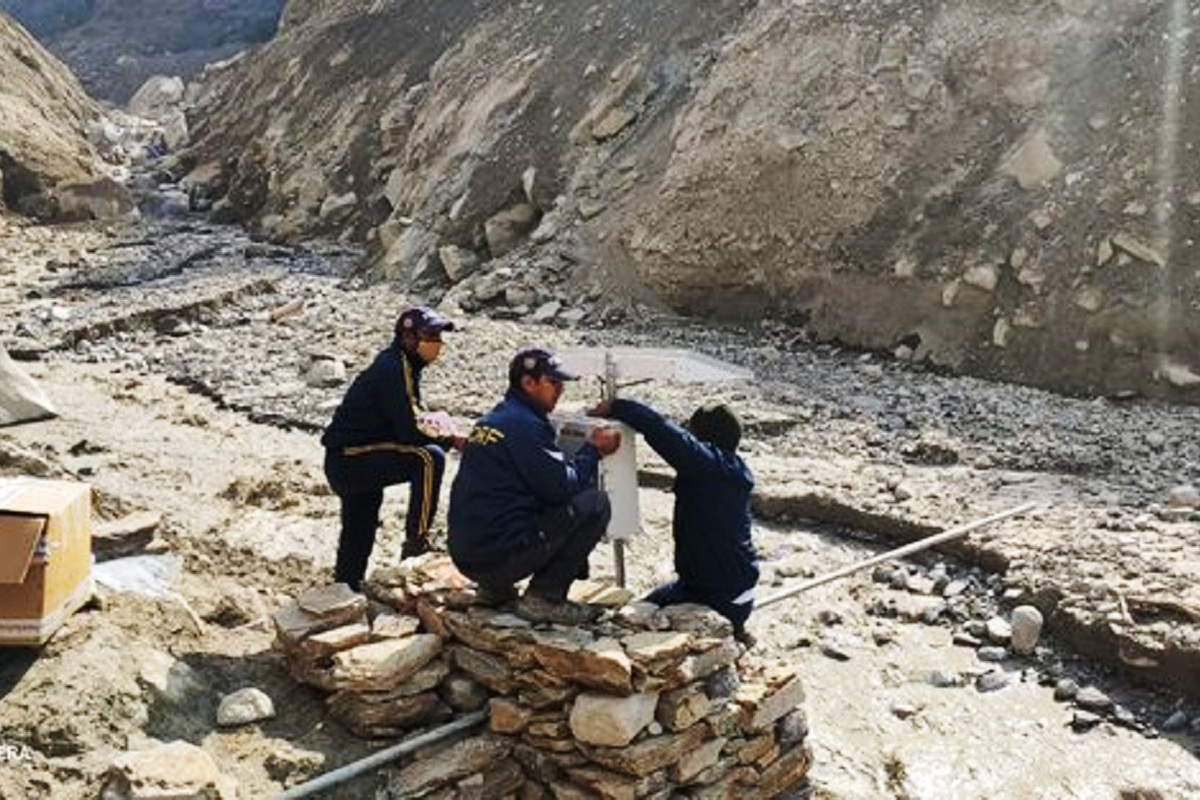Uttarakhand gets Deepam Seth as regular DGP after a year
Uttarakhand finally got its regular Director General of Police (DGP) after a gap of almost a year.
Glacier melting is the major impact of global warming caused by climate change. The global land and ocean temperature is rising by 0.18 degree Celsius per decade since 1981.

(SNS)
The Chamoli disaster is the curtain call for policy makers to prioritise environmental conservation over non-green developmental projects and admit the reality of climate change and global warming impacts.
A section of Nanda Devi glacier collapses on the morning of Sunday, 7th February, at Chamoli district of Uttarakhand, causing enormous damage. About 150 people are missing and the glacier as well as landslide have caused massive damage to the two dams on Rishi Ganga and Dhauli Ganga.
This disaster is not a sudden event, rather can be linked with the developmental activities in the biodiversity rich Western Himalayan heartland. Chamoli had already been in focus on 29 March 1999 due to the devastating 6.8 Richter earthquake that had resulted in the death of over a hundred people. Geologically this region is under severe risk due to the undergoing crustal shortening along the 2400 km long northern edge of the Indian plate. So, the whole Himalayan region is under earthquake risk. Being in an earthquake prone zone as well as in the biodiversity rich western Himalayan eco-region, these mountain tracks and valleys must be excluded from developmental plans.
Advertisement
The evergreen broadleaf forest of Western Himalayas is under serious risk of climate change and ever increasing anthropogenic foot print. This ecosystem is dominated by oaks. It is the home of endangered fauna such as the Asiatic black bear, leopard, the Himalayan tahr, and Himalayan serow. Around 315 species of birds inhabit these forests – notable amongst them are the white-cheeked tit, whitethroated tit, spectacled finch, Kashmir flycatcher, Tytler’s leaf-warbler, orange bullfinch and Kashmir nuthatch. The Himalayan quail is now debated to be extinct from this region.
Glacier melting is the major impact of global warming caused by climate change. The global land and ocean temperature is rising by 0.18 degree Celsius per decade since 1981. A National Oceanic and Atmospheric Administration (NOAA), USA report predicts that the global surface temperature will be 0.5°C warmer than the 1986-2005 average. Globally, this rise in temperature trends is melting the glaciers and ice caps. US National Snow and Ice Data Center reported that the Arctic ice sheet has melted down drastically over the decade and now only 3.74 million square kilometers remains. Greenland glaciers lost a record 532 billion metric tons of ice in 2019. The Antarctic ice sheet also got a record blow from global warming with an ice mass loss of around 252 Gigatonnes per year between 2009 and 2017.
Climate change induced global warming is also the major reason behind massive melting of Himalayan glaciers. A 2008 report indicates that the Gangotri glacier, the lifeblood of the Ganges river system, has receded 1,500 metres in the last 70 years. Nanda Devi glacier, the reason behind the current predicament, has shrunk 217 per cent in 2017 compared to its size in 1970. Reduction of these glaciers not only foretells an environmental catastrophe but also indicates a looming shadow on the food security of the nation. Ganges basin accounts for only 26 per cent of India’s land area but supports about 43 per cent of the country’s population.
With all these major indications of environmental failures, the nation’s developmental machine has not refrained from exploring the biodiversity rich Himalayan region. The commissioning of two hydro- electric power plants in the earthquake-prone and environmentally sensitive Chamoli region is debatable. India ranks fifth in the world in terms of its hydroelectric power generation capacity, but this accounts for only 12 per cent of nation’s power production. But exploiting the hydro electric potential always comes with a note of caution because it can result in tremendous damage to the environment. A 2018 report indicated that the state of Uttarakhand has 37 operational hydroelectric power projects while 87 more are going to be commissioned in future.
Stone quarrying, blasting of mountains and construction activity near the Rishi Ganga and Dhauli Ganga may be the triggering point for the recent disaster at Chamoli. With recent EIA, 2020 amendment draft, small scale hydro electric projects can escape environmental clearance regulations. This can have negative impact in this region as more and more such projects can be commissioned without any environmental impact studies.
Development is taking a huge toll on the environment worldwide. In the context of the Western Himalayas, sustainable eco- friendly developmental models need to be adopted as compared to resource exploitive methods.
Yet, another disaster in the risk-prone Chamoli region is the wake-up call for policy makers to revisit their priorities for development in this biodiversity rich eco-region. Nature needs to be preserved in the pristine Western Himalayan ecosystem. Climate change is a reality and the extreme weather events across the globe are a testament to this fact. Western Himalaya needs protection and eco-friendly sustainable development rather than building hydro-electric power generation units, promoting mining or stone quarrying. Only then can recurrence of these disasters be averted.
The writers are, respectively, Assistant Professor and Dean at Jindal School of Environment & Sustainability, O.P. Jindal Global University, Haryana, India.
Advertisement